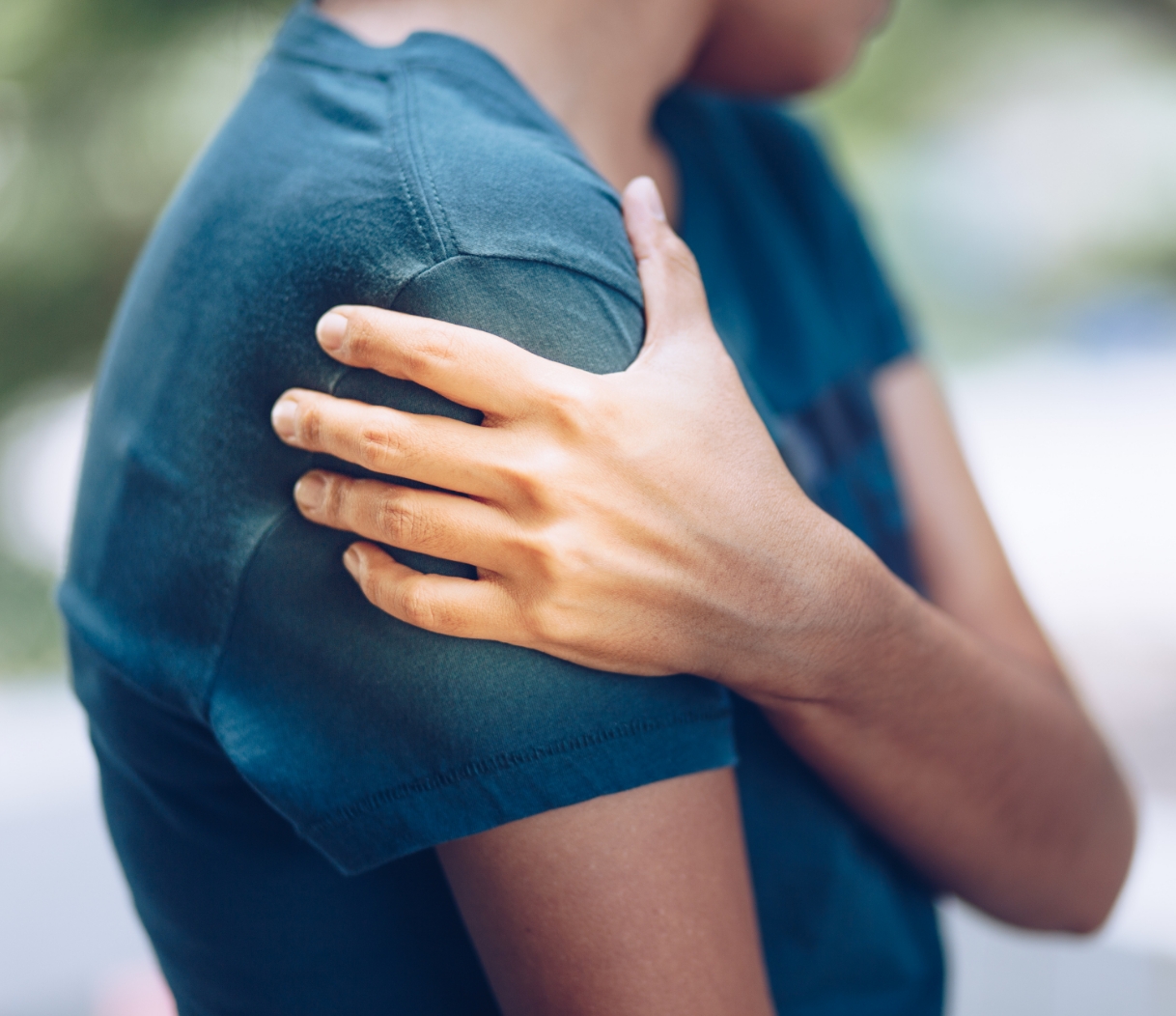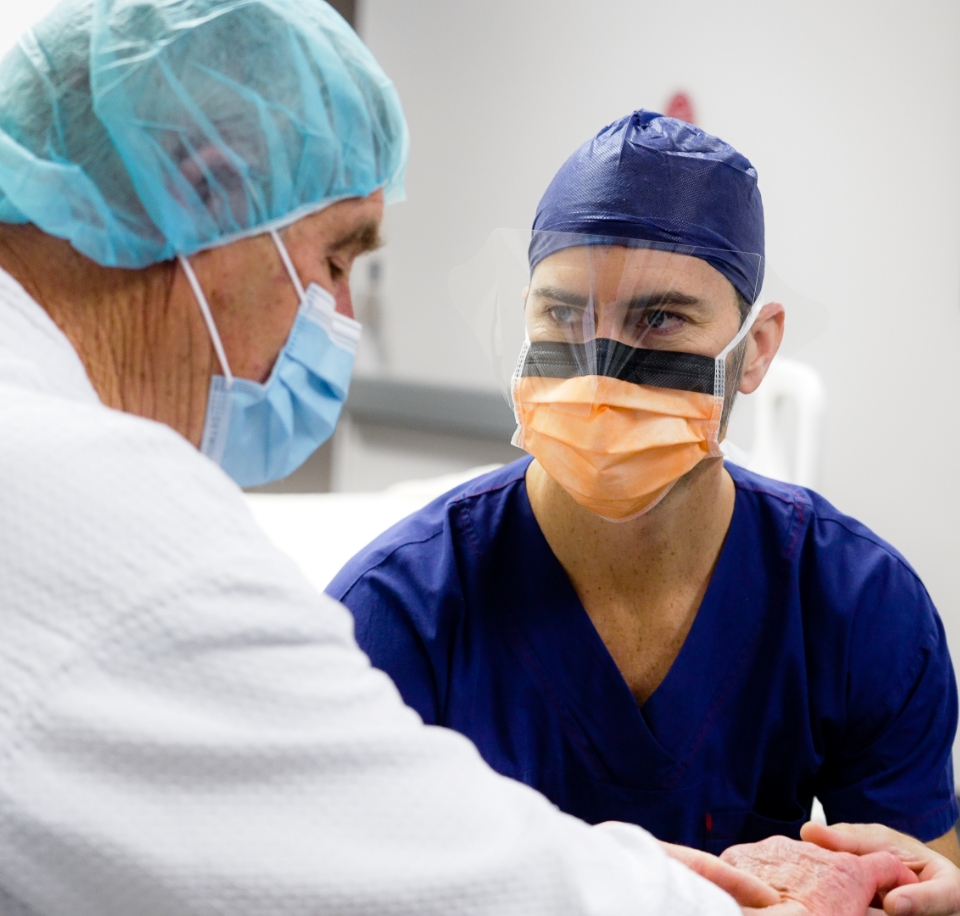SLAP Injuries
Expert Diagnosis and Treatment in Adelaide with
Dr Oscar Brumby-Rendell
A SLAP tear refers to an injury of the labrum: the ring of cartilage that surrounds the shoulder socket. SLAP stands for Superior Labrum from Anterior to Posterior, describing the location and direction of the tear.
These injuries commonly affect athletes, particularly those involved in overhead sports such as baseball, swimming, tennis, or weightlifting. They may also result from trauma such as a fall onto an outstretched arm or sudden pulling forces.

Causes and sypmtoms of SLAP injuries
What may cause a SLAP tear?
SLAP tears can occur from both repetitive overuse and acute injuries. Common causes include:
-
Throwing sports (e.g., cricket, baseball, javelin)
-
Repetitive overhead motions (e.g., swimming, volleyball)
-
Sudden traction injuries (e.g., lifting a heavy object quickly or catching a falling item)
-
Trauma, such as falling onto the shoulder or arm
-
Degenerative changes in older adults
These tears may also accompany other shoulder conditions like rotator cuff tears or biceps tendon injuries.
Symptoms of a SLAP tear
People with SLAP tears often experience:
-
Deep shoulder pain, especially during overhead activity
-
Clicking or catching sensations in the joint
-
Shoulder weakness or a feeling of instability
-
Decreased range of motion
-
Difficulty with lifting or throwing motions
Because symptoms can overlap with other shoulder conditions, a thorough evaluation is essential.
How is a SLAP Injury Diagnosed?
Dr Oscar Brumby-Rendell conducts a comprehensive clinical assessment, including:
Dr Oscar Brumby-Rendell conducts a comprehensive clinical assessment, including:
-
Detailed patient history
-
Physical examination, focusing on shoulder stability and motion
-
Diagnostic imaging, such as MRI with contrast, which helps visualise labral tears
SLAP lesions are often difficult to diagnose with imaging alone, and arthroscopic evaluation may be required in some cases.

Treatment options
Non-surgical treatment
In many cases, non-surgical treatment is the first line of management, especially for patients without significant instability. Treatment may include:
-
Rest and activity modification
-
Physiotherapy to strengthen surrounding muscles and improve shoulder mechanics
-
Anti-inflammatory medications
-
Corticosteroid injections, when appropriate
This approach can be very effective, particularly in patients with mild or degenerative tears.

Surgical treatment
For patients who do not improve with conservative care, or those with more severe or complex tears, arthroscopic shoulder surgery may be recommended. Dr Brumby-Rendell offers advanced arthroscopic techniques including:
-
SLAP repair, using sutures to reattach the torn labrum to the socket
-
Biceps tenodesis, where the biceps tendon is reattached outside the joint to relieve tension and pain
-
Debridement, or smoothing of the torn labral tissue to reduce symptoms
The chosen procedure depends on the tear pattern, patient age, activity level, and goals.
SLAP tear patients who also have a shoulder dislocation or Bankart (labral) Tear will likely require surgery.
SLAP tear surgery
SLAP tears are repaired through arthroscopic surgery, which targets labrum damage.
This type of surgery is minimally invasive, and Dr Brumby-Rendell may trim the labrum and then place it in its anatomical position, attached to the shoulder bone.
Post-surgery, a sling will immobilise your arm until complete recovery. Dr Brumby-Rendell will advise you regarding your tailored recovery plan.
Frequently Asked Questions
Yes. Studies suggest a reoperation rate of around 6%, and recurrent shoulder dislocation occurs in approximately 8% of cases following certain tear repairs.

Why Choose Dr Oscar Brumby-Rendell for SLAP Tear Treatment in Adelaide?
Dr Brumby-Rendell is a fellowship-trained shoulder surgeon with extensive experience in managing labral injuries and complex shoulder conditions. His patient-centred approach, combined with the use of minimally invasive techniques, ensures optimal outcomes for athletes and active individuals alike.
Ready to learn more?
Learn more about shoulder tear injuries with this quick video about Rotator Cuff Tear by Dr Oscar Brumby-Rendell.
Read more articles about shoulder-related injuries here:
Once you have a referral…
Book your consultation here.
